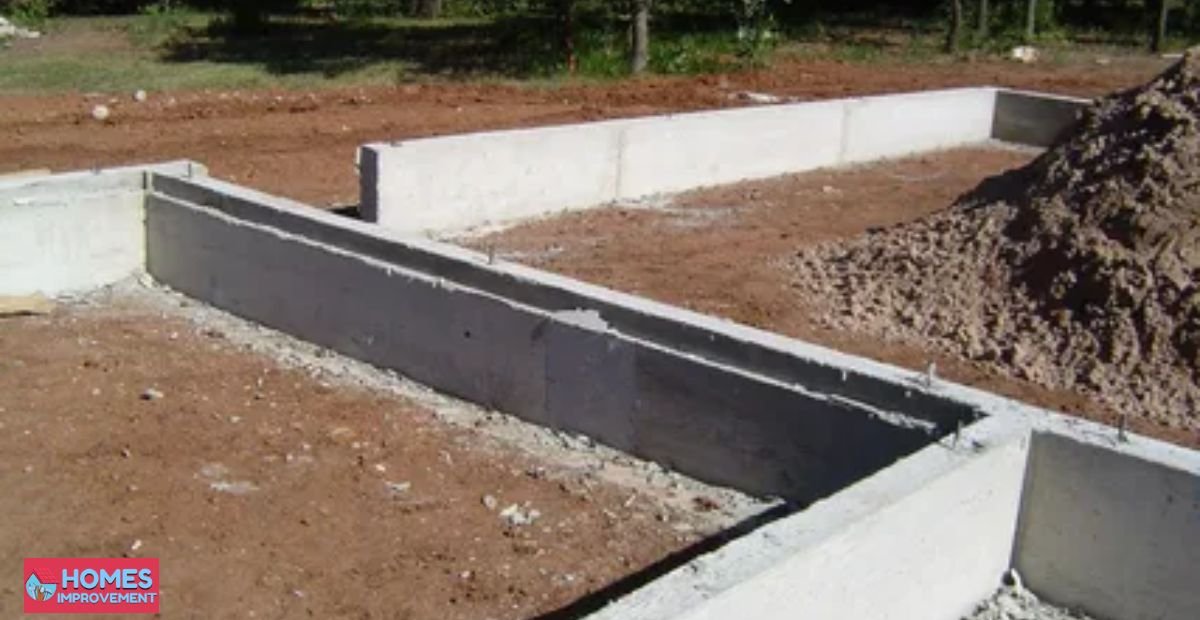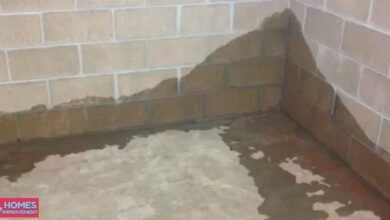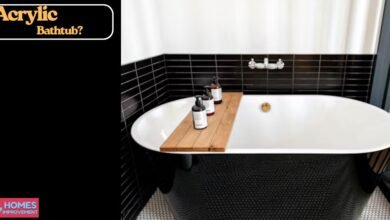Stem Wall: 2026 Game-Changing, Innovative, and Practical Home Ideas!

A stem wall is a vital part of modern home construction, acting as a strong link between the foundation and the structure above. In 2026, homeowners are exploring innovative ways to make stem walls both functional and visually appealing. These walls provide stability, protect against moisture, and prevent structural damage over time. Beyond their practical use, stem walls can enhance energy efficiency and reduce long-term maintenance costs. Modern construction techniques allow for creative designs that complement home aesthetics. Choosing the right materials ensures durability and safety while supporting sustainable building practices. Whether building a new home or renovating, stem walls have become an essential feature in modern architecture. Understanding their benefits and applications can transform your home into a resilient, stylish, and energy-efficient space.
Why Stem Walls Are Essential for Modern Homes
A stem wall is a key part of modern home construction because it connects the foundation to the structure above. It raises the home off the ground, protecting it from moisture, soil movement, and flooding. By evenly distributing weight, stem walls also prevent cracks and long-term structural issues, making them vital for safe and durable homes.
In 2026, stem walls are more than just structural support—they improve energy efficiency and home comfort. With added insulation, they help reduce energy loss and keep indoor spaces balanced year-round. They also act as barriers against pests and enhance property value, making them an essential feature in modern home design.
What is a Stem Wall and How Does It Work?

A stem wall is a short, vertical wall that connects a building’s foundation to the framing of the structure. Typically made from concrete, masonry, or reinforced materials, stem walls elevate the home above ground level, preventing water seepage and soil movement from affecting the foundation. These walls are particularly useful in areas prone to flooding or damp conditions. By providing a stable base, stem walls distribute weight evenly and reduce the risk of structural cracks. In 2026, innovative techniques like insulated concrete forms are becoming popular for building stem walls that improve thermal efficiency. Stem walls also allow for easier integration of utilities, such as plumbing and electrical lines, beneath the house. Homeowners who invest in quality stem wall construction often notice lower maintenance costs over time. Proper construction requires attention to drainage, reinforcement, and leveling to ensure longevity. Ultimately, a well-built stem wall contributes to a safer, more energy-efficient, and resilient home.
Benefits of Stem Walls in Home Construction
A stem wall provides several practical and long-lasting benefits in modern home construction. It not only strengthens the foundation but also protects the house from water damage, soil movement, and pest intrusion. By elevating the home above ground level, it reduces the risk of flooding and ensures better durability over time. Stem walls also contribute to energy efficiency, as insulated designs help regulate indoor temperatures and lower utility costs. In 2026, builders are using stem walls not just for strength but also for sustainable and stylish home designs. Overall, a stem wall is an investment that combines safety, comfort, and long-term value.
Key benefits include:
- Protects the home from moisture and flooding.
- Distributes weight evenly to prevent cracks.
- Improves insulation and reduces energy costs.
- Creates a crawl space for easy maintenance.
- Blocks pests and insects from entering the home.
- Increases property value with durability and safety.
Innovative Stem Wall Materials for Modern Homes
In 2026, stem wall materials are evolving to provide better strength and energy efficiency. While concrete and masonry are still common, insulated concrete forms (ICFs) are becoming popular for their thermal performance. Hybrid designs with steel reinforcement also add extra durability, especially in areas prone to earthquakes.
Sustainable options are also trending in modern construction. Materials like recycled aggregates, fly ash concrete, and lightweight masonry blocks reduce environmental impact. Many stem walls now include water-resistant coatings to prevent seepage and mold, ensuring homes stay durable, efficient, and eco-friendly.
Step-by-Step Guide to Building a Stem Wall
Building a stem wall requires careful planning and proper execution to ensure strength and durability. From preparing the site to finishing the surface, each step plays a vital role in the wall’s stability. By following the right process, homeowners can achieve a foundation that is both reliable and long-lasting.
Steps to Build a Stem Wall:
- Site Preparation – Excavate and level the construction area.
- Install Footings – Pour reinforced concrete footings for a solid base.
- Set Reinforcement – Place steel rebar for added strength.
- Build the Wall – Lay concrete or masonry blocks to the required height.
- Ensure Leveling – Check alignment and balance throughout construction.
- Cure Properly – Allow concrete to cure to prevent cracks
- Add Drainage – Install systems to direct water away.
- Finish and Seal – Apply waterproof coating or insulation for protection.
Common Mistakes to Avoid When Installing Stem Walls
Installing a stem wall may seem straightforward, but even small mistakes can weaken the entire structure. Many homeowners or builders overlook essential details like leveling, drainage, or reinforcement, which later cause costly repairs. By knowing these common errors, you can ensure your stem wall remains durable, safe, and long-lasting.
Mistakes to Avoid:
- Ignoring proper leveling, which leads to uneven weight distribution.
- Using low-quality materials that reduce durability.
- Skipping steel reinforcement, weakening structural strength.
- Poor drainage planning, causing water damage and mold growth.
- Overlooking insulation, leading to higher energy costs.
- Not following local building codes, creating legal and safety issues.
Enhancing Home Design with Stem Walls
A stem wall isn’t just practical; it can also elevate the aesthetic appeal of your home. By integrating modern finishes like textured concrete, stone veneers, or decorative panels, stem walls can complement any home style. In 2026, homeowners are embracing stem walls as design features that blend durability with beauty. They can also be used to create elevated patios, planters, or integrated lighting for a visually striking effect. Additionally, stem walls provide flexibility for future expansions, allowing homeowners to add rooms or outdoor spaces without structural compromise. By combining function with innovative design, stem walls can transform the overall look of your home while maintaining all structural benefits. This approach ensures that practicality and aesthetics work together, giving your home a unique identity and long-lasting value.
Maintenance Tips for Long-Lasting Stem Walls
Keeping a stem wall in good condition requires regular care and timely inspections. Homeowners should check for visible cracks, moisture seepage, or pest damage that may weaken the structure over time. Applying sealants or waterproof coatings is an effective way to protect against water intrusion. Proper grading around the home also ensures rainwater flows away instead of pooling near the stem wall. These small maintenance steps prevent costly repairs in the future.
Modern methods in 2026 make stem wall maintenance easier and more effective. Eco-friendly coatings, self-healing concrete, and improved drainage systems are now widely available to extend durability. Clearing debris, reinforcing weak spots, and scheduling routine professional inspections help maintain long-term stability. With consistent care, a stem wall can last for decades, safeguarding the home’s foundation while adding value and reliability.
Conclusion
In 2026, stem walls have become a game-changing, innovative, and practical element for modern homes. Beyond structural support, they enhance energy efficiency, durability, and aesthetic appeal. Using the right materials, construction methods, and maintenance techniques ensures long-term performance. By avoiding common mistakes and embracing modern design ideas, homeowners can maximize the benefits of their stem wall. Whether building a new home or renovating an existing one, a well-constructed stem wall is a valuable addition that safeguards your investment. Practical, innovative, and stylish, stem walls represent the future of resilient home construction. Implementing these ideas today ensures your home remains safe, efficient, and visually stunning for years to come.
FAQs
What is the primary purpose of a stem wall?
A stem wall provides structural support by connecting the foundation to the home’s framing. It elevates the house above ground, prevents moisture seepage, and reduces soil pressure, ensuring long-term stability and durability for the home.
Can I build a stem wall myself?
Yes, but professional guidance is recommended. Building a stem wall involves excavation, reinforced footings, and precise leveling. Mistakes can compromise structural integrity, so hiring an experienced contractor ensures safety and quality.
What materials are best for a stem wall in 2026?
Reinforced concrete and insulated concrete forms (ICFs) are popular choices for strength and energy efficiency. Eco-friendly options, hybrid designs, and lightweight masonry blocks are also used for modern, sustainable homes.
How long does a stem wall last?
With proper construction and maintenance, a stem wall can last 50+ years. Regular inspections, sealing, and drainage management help prevent cracks, water damage, and pest intrusion, extending its lifespan.
How does a stem wall improve home energy efficiency?
Stem walls provide a stable base for insulation and help prevent air leaks. Modern materials like ICFs offer thermal resistance, reducing heating and cooling costs while keeping the home comfortable year-round.





